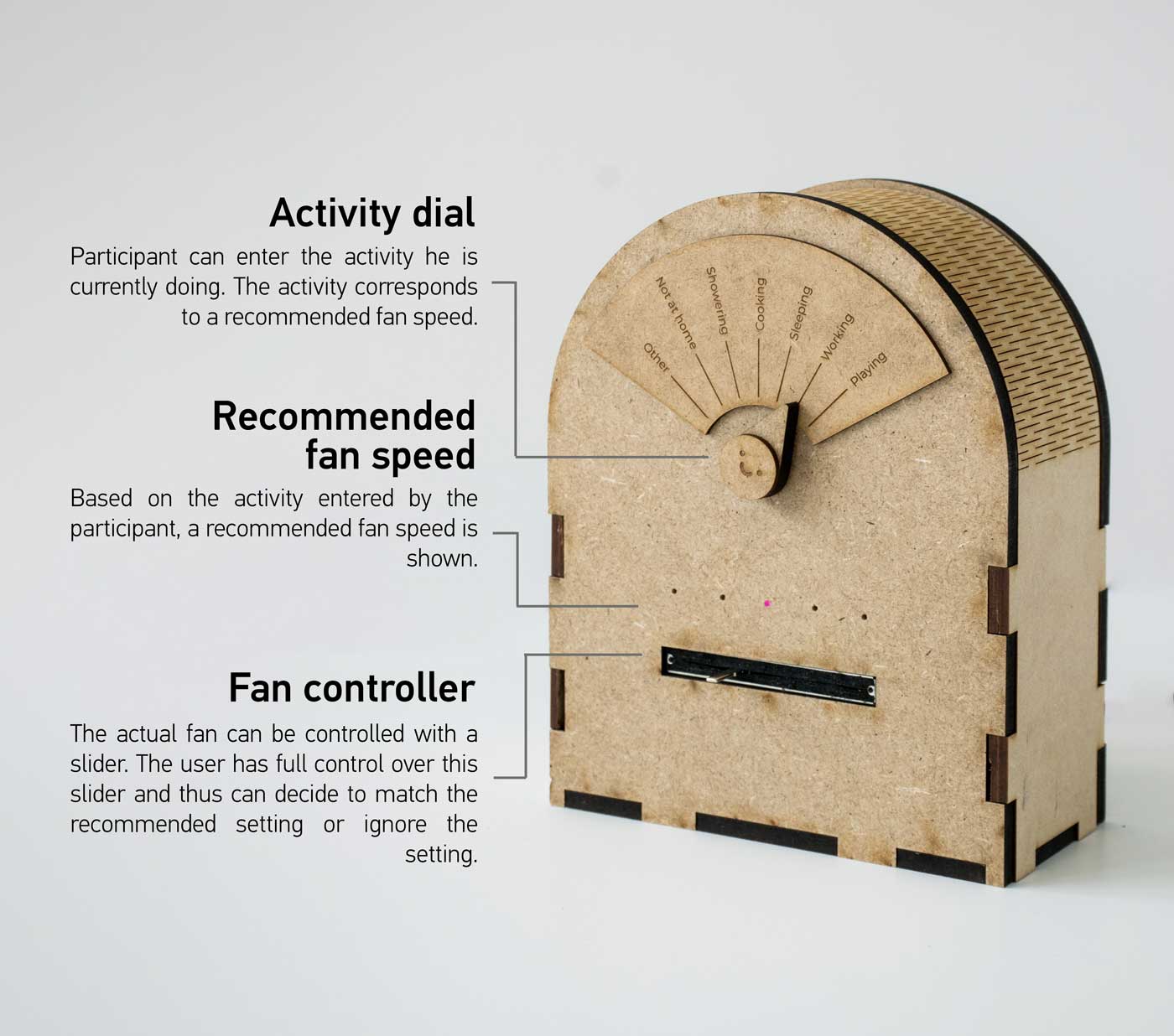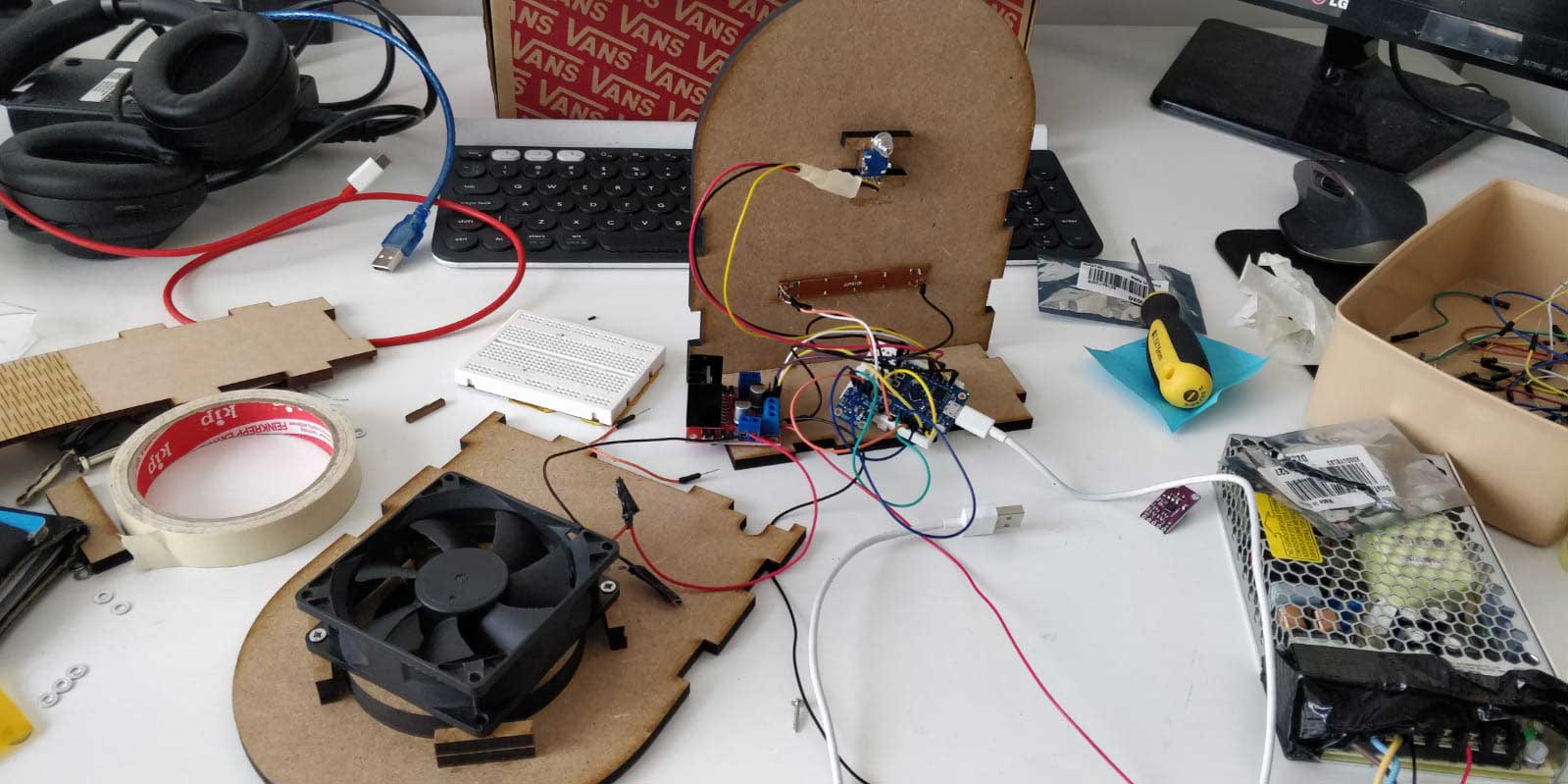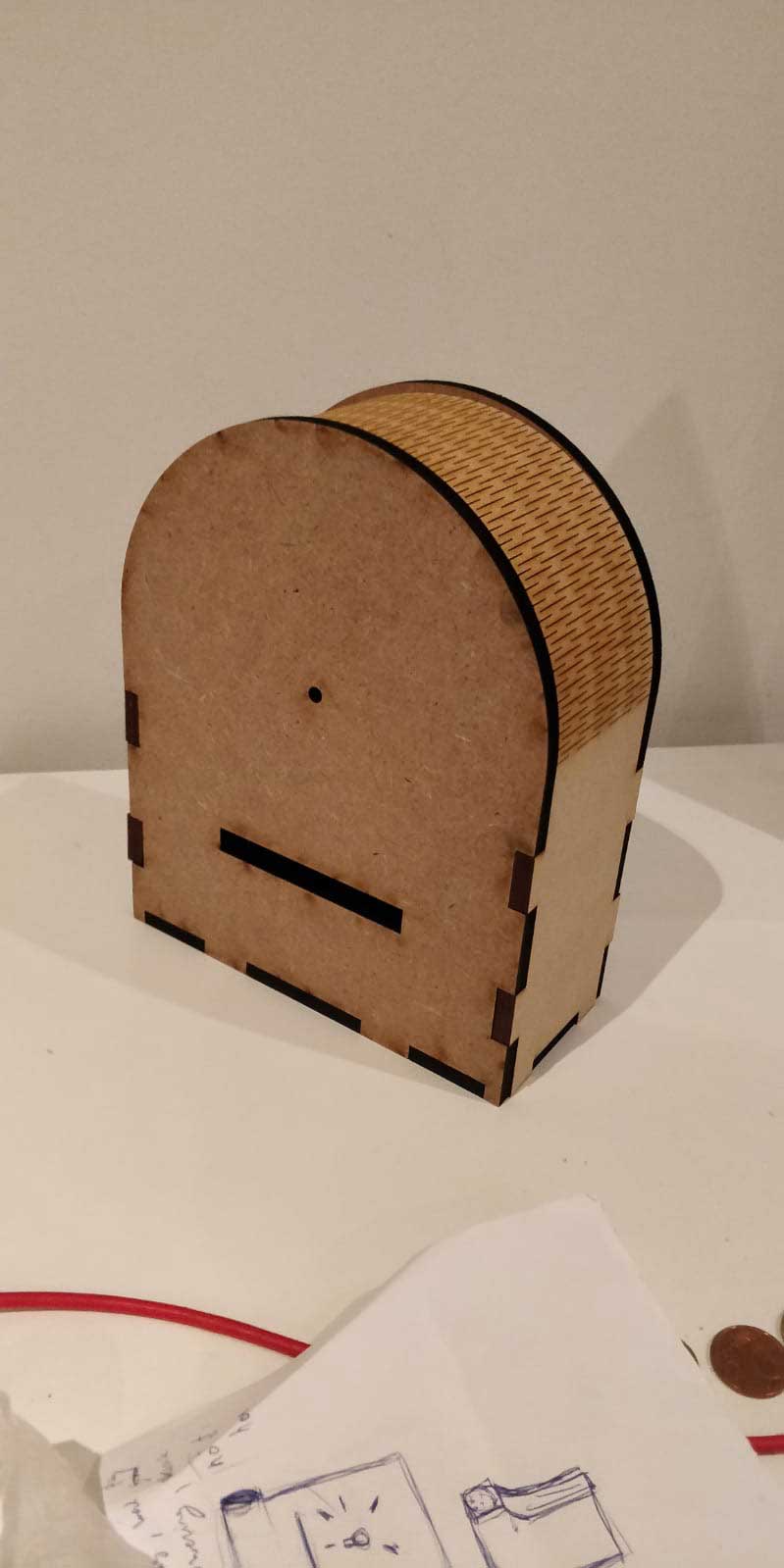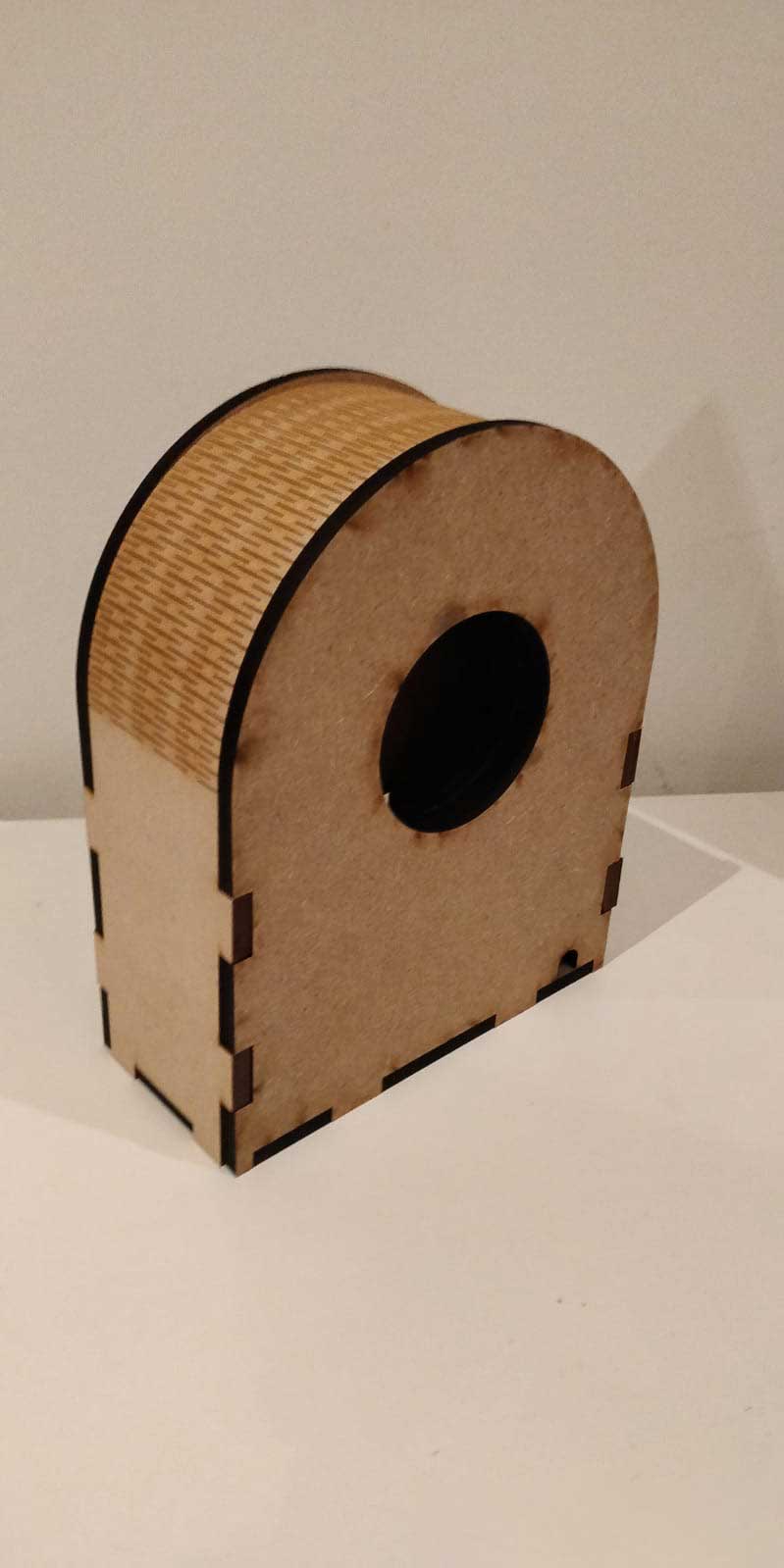Air quality in multi-purpose room
In our homes, we do many different activities. All of these activities have a different effect on the air quality in the house. Doing the laundry can have a different effect than an cooking session. However, both can still have a bigger influence on air quality than one might think. In bigger spaces, this should not be an issue, but when every activity takes place in the same, small room, such as a studio, air quality is a bigger issue.
Data-enabled design process
For this project we used Data Enabled Design approach, as proposed by Van Kollenburg & Bogers. This approach starts with using sensors to collect data. This is called the contextual step in which insights in the behavior of the participants is gained. This is done by collecting the sensor data and conducting interviews about this data. This contextual step serves as an insight gaining step to start the next step, which is the informed step. In this step design explorations are conducted based on the earlier gained insights. The exploring is done by deploying multiple iterations of prototypes. With each prototype, we were trying to find new details or data. In total, 3 iterations were performed in the informed step.
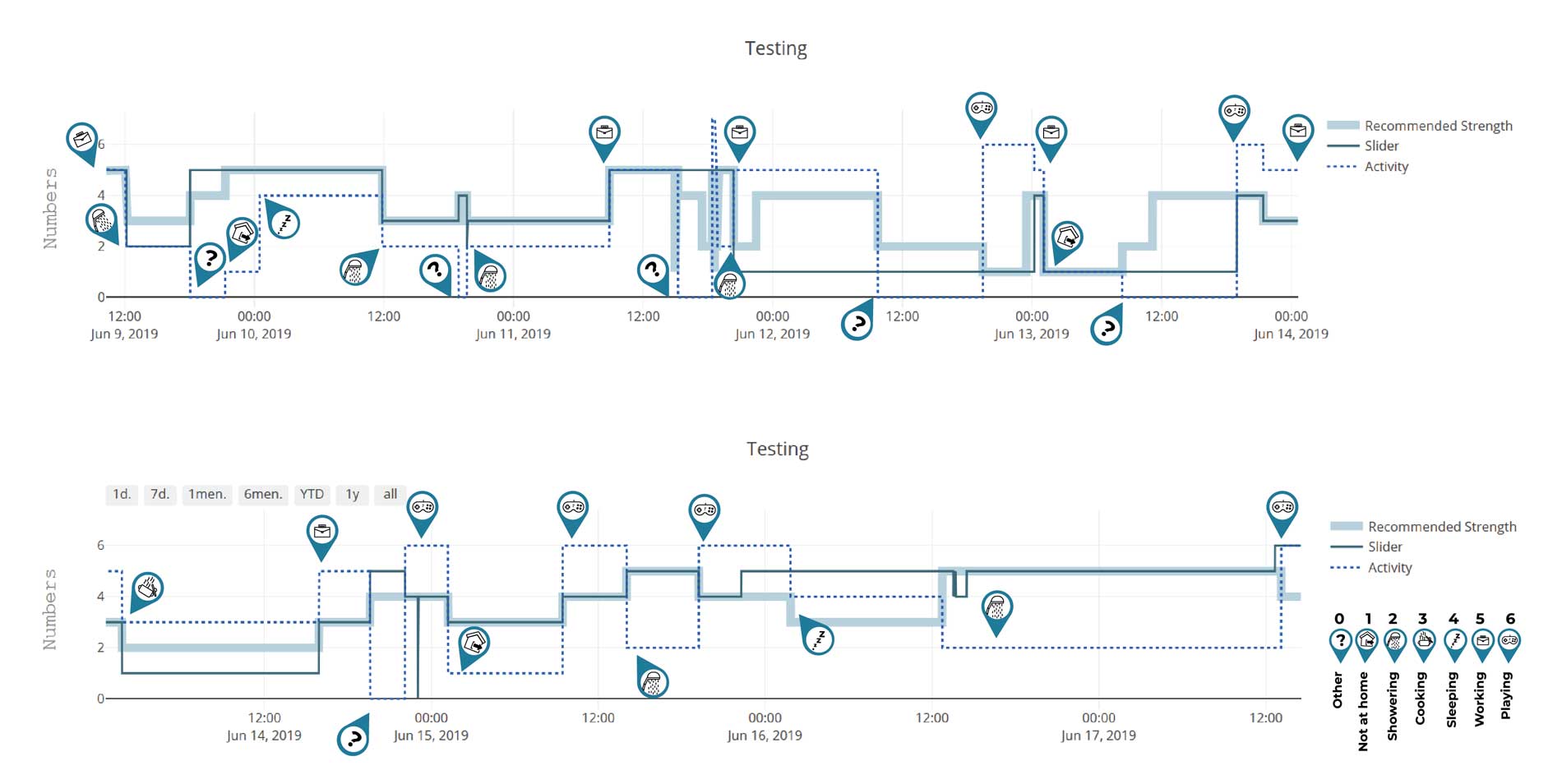
Data gathering
During the research period, participants data was gathered. In overall, it can be seen that participant cared about his air quality of the apartment and listened to the recommended fan speed level.


